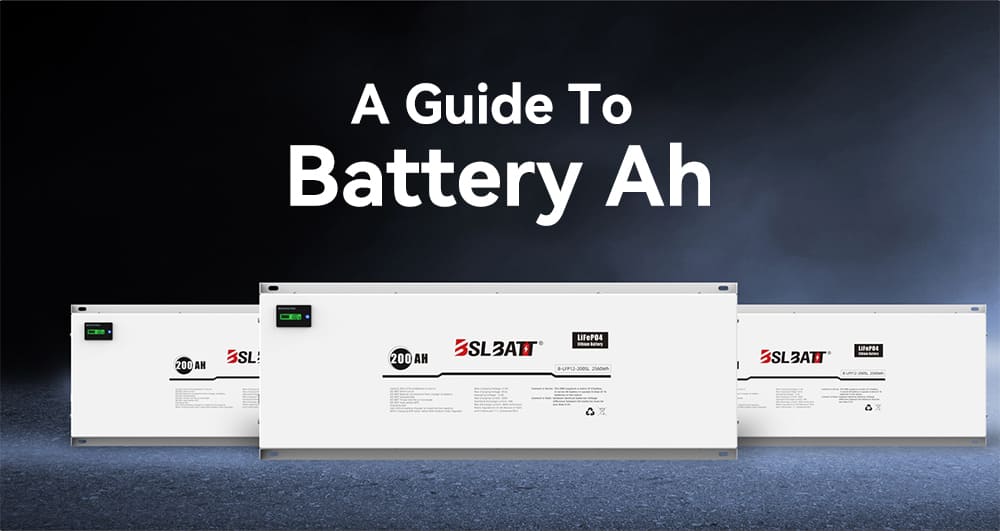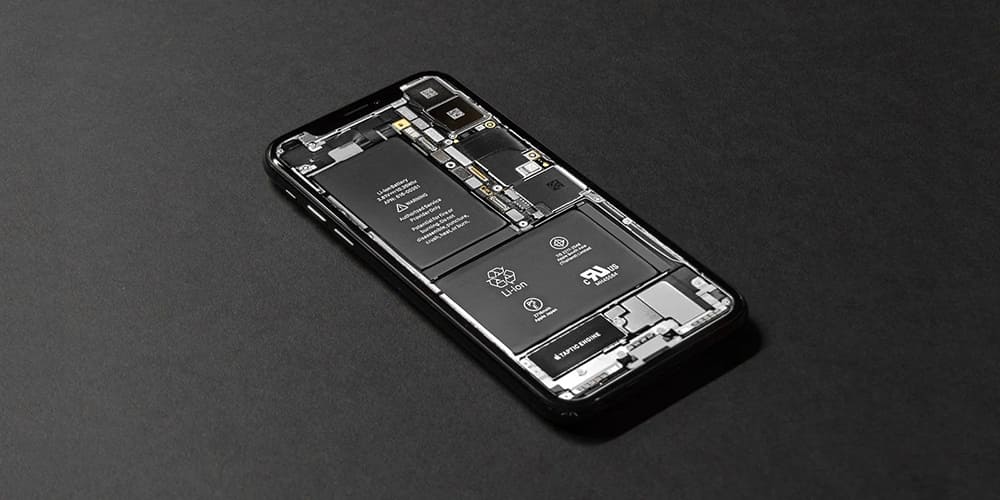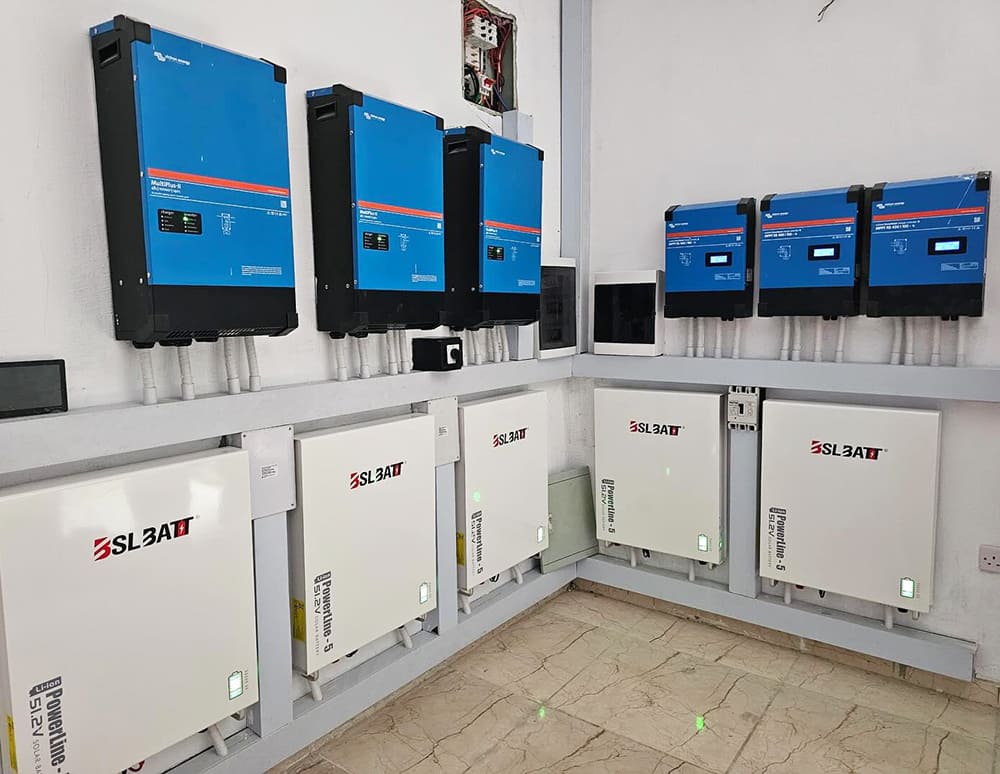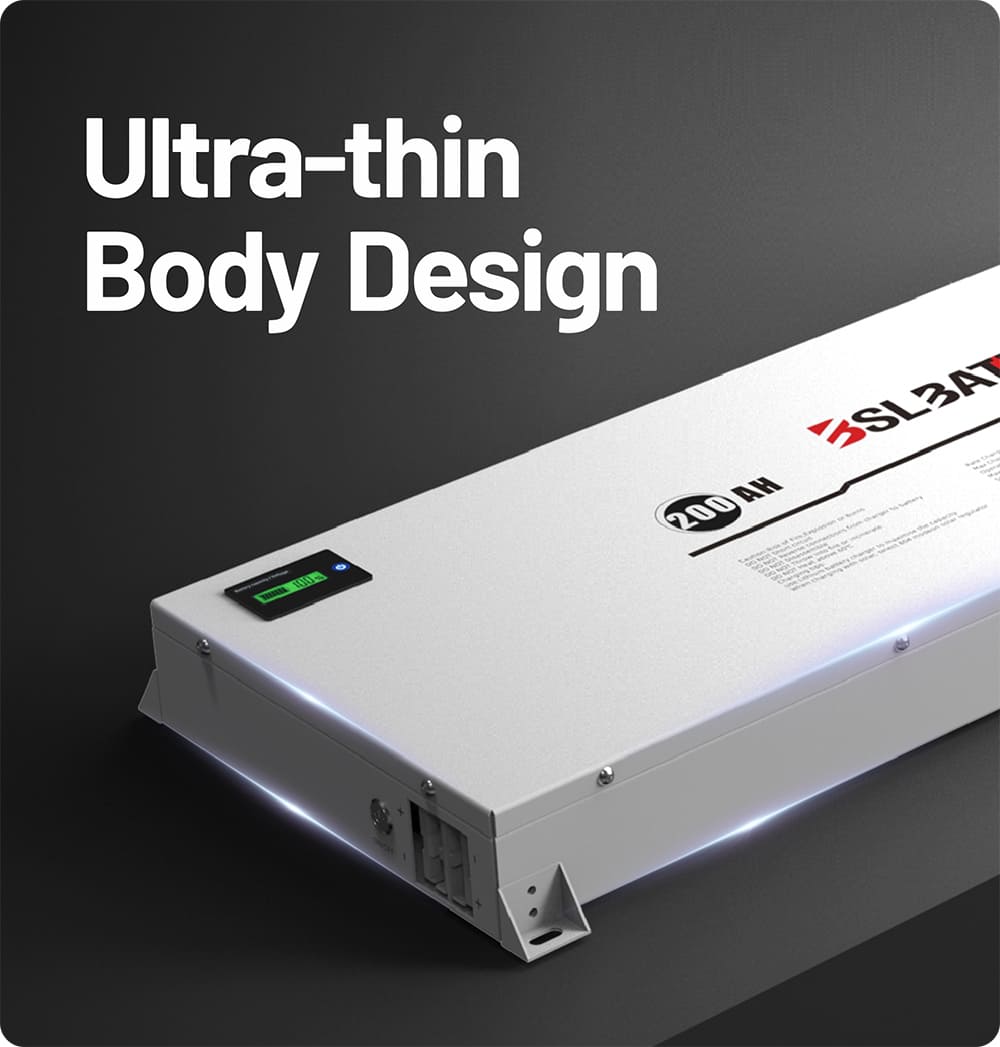Main Takeaways:
• Ah (amp-hours) measures battery capacity, indicating how long a battery can power devices.
• Higher Ah generally means longer runtime, but other factors also matter.
• When choosing a battery:
Assess your power needs
Consider depth of discharge and efficiency
Balance Ah with voltage, size, and cost
• The right Ah rating depends on your specific application.
• Understanding Ah helps you make smarter battery choices and optimize your power systems.
• Amp-hours are important, but they’re just one aspect of battery performance to consider.
While Ah ratings are crucial, I believe the future of battery selection will focus more on “smart capacity”. This means batteries that adapt their output based on usage patterns and device needs, potentially involving AI-driven power management systems that optimize battery life and performance in real-time. As renewable energy becomes more prevalent, we may also see a shift towards measuring battery capacity in terms of “days of autonomy” rather than just Ah, especially for off-grid applications.
What Does Ah or Ampere-hour Mean on A Battery?
Ah stands for “ampere-hour” and is a crucial measure of a battery’s capacity. Simply put, it tells you how much electrical charge a battery can deliver over time. The higher the Ah rating, the longer a battery can power your devices before needing a recharge.
Think of Ah like the fuel tank in your car. A larger tank (higher Ah) means you can drive further before needing to refuel. Similarly, a higher Ah rating means your battery can power devices longer before requiring a recharge.
Real-World Examples:
- A 5 Ah battery can theoretically provide 1 amp of current for 5 hours or 5 amps for 1 hour.
- A 100 Ah battery used in solar energy systems (like those from BSLBATT) could power a 100-watt device for about 10 hours.
However, these are ideal scenarios. Actual performance can vary due to factors such as:
- Discharge rate
- Temperature
- Battery age and condition
- Battery Type
But there’s more to the story than just a number. Understanding Ah ratings can help you:
- Choose the right battery for your needs
- Compare battery performance across different brands
- Estimate how long your devices will run on a charge
- Optimize your battery usage for maximum lifespan
As we dive deeper into Ah ratings, you’ll gain valuable insights that will help you become a more informed battery consumer. Let’s start by breaking down what Ah really means and how it impacts battery performance. Ready to amp up your battery knowledge?
How Ah Affects Battery Performance?
Now that we understand what Ah means, let’s explore how it impacts battery performance in real-world scenarios. What does a higher Ah rating actually mean for your devices?
1. Runtime:
The most obvious benefit of a higher Ah rating is increased runtime. For example:
- A 5 Ah battery powering a 1 amp device will last about 5 hours
- A 10 Ah battery powering the same device could last around 10 hours
2. Power Output:
Higher Ah batteries can often deliver more current, allowing them to power more demanding devices. This is why BSLBATT’s 100 Ah lithium solar batteries are popular for running appliances in off-grid setups.
3. Charging Time:
Larger capacity batteries take longer to charge fully. A 200 Ah battery will require roughly twice the charging time of a 100 Ah battery, all else being equal.
4. Weight and Size:
Generally, higher Ah ratings mean larger, heavier batteries. However, lithium technology has significantly reduced this trade-off compared to lead-acid batteries.
So, when does a higher Ah rating make sense for your needs? And how can you balance capacity with other factors like cost and portability? Let’s explore some practical scenarios to help you make informed decisions about battery capacity.
Common Ah Ratings for Different Devices
Now that we understand how Ah affects battery performance, let’s explore some typical Ah ratings for various devices. What kind of Ah capacities can you expect to find in everyday electronics and larger power systems?
Smartphones:
Most modern smartphones have batteries ranging from 3,000 to 5,000 mAh (3-5 Ah). For example:
- iPhone 13: 3,227 mAh
- Samsung Galaxy S21: 4,000 mAh
Electric Vehicles:
EV batteries are much larger, often measured in kilowatt-hours (kWh):
- Tesla Model 3: 50-82 kWh (equivalent to about 1000-1700 Ah at 48V)
- BYD HAN EV: 50-76.9 kWh (roughly 1000-1600 Ah at 48V)
Solar Energy Storage:
For off-grid and backup power systems, batteries with higher Ah ratings are common:
- BSLBATT 12V 200Ah Lithium Battery: Suitable for small and medium-sized solar energy installations such as RV energy storage and marine energy storage.
- BSLBATT 51.2V 200Ah Lithium Battery: Ideal for larger residential or small commercial installations
But why do different devices require such vastly different Ah ratings? It all comes down to power demands and runtime expectations. A smartphone needs to last a day or two on a charge, while a solar battery system might need to power a home for several days during cloudy weather.
Consider this real-world example from a BSLBATT customer: “I upgraded from a 100 Ah lead-acid battery to a 100 Ah lithium battery for my RV. Not only did I get more usable capacity, but the lithium battery also charged faster and maintained voltage better under load. It’s like I doubled my effective Ah!”
So, what does this mean when you’re shopping for a battery? How can you determine the right Ah rating for your needs? Let’s explore some practical tips for choosing the optimal battery capacity in the next section.
Calculating Battery Runtime Using Ah
Now that we’ve explored common Ah ratings for different devices, you might be wondering: “How can I use this information to calculate how long my battery will actually last?” That’s an excellent question, and it’s crucial for planning your power needs, especially in off-grid scenarios.
Let’s break down the process of calculating battery runtime using Ah:
1. Basic Formula:
Runtime (hours) = Battery Capacity (Ah) / Current Draw (A)
For example, if you have a 100 Ah battery powering a device that draws 5 amps:
Runtime = 100 Ah / 5 A = 20 hours
2. Real-World Adjustments:
However, this simple calculation doesn’t tell the whole story. In practice, you need to consider factors like:
Depth of Discharge (DoD): Most batteries shouldn’t be fully discharged. For lead-acid batteries, you typically only use 50% of capacity. Lithium batteries, like those from BSLBATT, can often be discharged up to 80-90%.
Voltage: As batteries discharge, their voltage drops. This can affect the current draw of your devices.
Peukert’s Law: This accounts for the fact that batteries become less efficient at higher discharge rates.
3. Practical Example:
Let’s say you’re using a BSLBATT 12V 200Ah lithium battery to power a 50W LED light. Here’s how you might calculate the runtime:
Step 1: Calculate current draw
Current (A) = Power (W) / Voltage (V)
Current = 50W / 12V = 4.17A
Step 2: Apply the formula with 80% DoD
Runtime = (Battery Capacity x DoD) / Current Draw\nRuntime = (100Ah x 0.8) / 4.17A = 19.2 hours
A BSLBATT customer shared: “I used to struggle with estimating runtime for my off-grid cabin. Now, with these calculations and my 200Ah lithium battery bank, I can confidently plan for 3-4 days of power without recharging.”
But what about more complex systems with multiple devices? How can you account for varying power draws throughout the day? And are there any tools to simplify these calculations?
Remember, while these calculations provide a good estimate, real-world performance can vary. It’s always wise to have a buffer in your power planning, especially for critical applications.
By understanding how to calculate battery runtime using Ah, you’re better equipped to choose the right battery capacity for your needs and manage your power consumption effectively. Whether you’re planning a camping trip or designing a home solar system, these skills will serve you well.
Ah vs. Other Battery Measurements
Now that we’ve explored how to calculate battery runtime using Ah, you might be wondering: “Are there other ways to measure battery capacity? How does Ah compare to these alternatives?”
Indeed, Ah is not the only metric used to describe battery capacity. Two other common measurements are:
1. Watt-hours (Wh):
Wh measures energy capacity, combining both voltage and current. It’s calculated by multiplying Ah by voltage.
For example: A 48V 100Ah battery has 4800Wh capacity (48V x 100Ah = 4800Wh)
2. Milliamp-hours (mAh):
This is simply Ah expressed in thousandths. 1Ah = 1000mAh.
So why use different measurements? And when should you pay attention to each?
This is particularly useful when comparing batteries of different voltages. For instance, comparing a 48V 100Ah battery to a 24V 200Ah battery is easier in Wh terms—they’re both 4800Wh.
mAh is commonly used for smaller batteries, like those in smartphones or tablets. It’s easier to read “3000mAh” than “3Ah” for most consumers.
Tips for Choosing the Right Battery Based on Ah
When it comes to selecting the ideal battery for your needs, understanding Ah ratings is crucial. But how can you apply this knowledge to make the best choice? Let’s explore some practical tips for choosing the right battery based on Ah.
1. Assess Your Power Needs
Before diving into Ah ratings, ask yourself:
- What devices will the battery power?
- How long do you need the battery to last between charges?
- What’s the total power draw of your devices?
For example, if you’re powering a 50W device for 10 hours daily, you’d need at least a 50Ah battery (assuming a 12V system).
2. Consider Depth of Discharge (DoD)
Remember, not all Ah are created equal. A 100Ah lead-acid battery might only provide 50Ah of usable capacity, while a 100Ah lithium battery from BSLBATT could offer up to 80-90Ah of usable power.
3. Factor in Efficiency Losses
Real-world performance often falls short of theoretical calculations. A good rule of thumb is to add 20% to your calculated Ah needs to account for inefficiencies.
4. Think Long-Term
Higher Ah batteries often have longer lifespans. A BSLBATT customer shared: “I initially balked at the cost of a 200Ah lithium battery for my solar setup. But after 5 years of reliable service, it’s been more economical than replacing lead-acid batteries every 2-3 years.”
5. Balance Capacity with Other Factors
While a higher Ah rating might seem better, consider:
- Weight and size constraints
- Initial cost vs. long-term value
- Charging capabilities of your system
6. Match Voltage to Your System
Ensure the battery’s voltage matches your devices or inverter. A 12V 100Ah battery won’t work efficiently in a 24V system, even though it has the same Ah rating as a 24V 50Ah battery.
7. Consider Parallel Configurations
Sometimes, multiple smaller Ah batteries in parallel can offer more flexibility than a single large battery. This setup can also provide redundancy in critical systems.
So, what does all this mean for your next battery purchase? How can you apply these tips to ensure you’re getting the most bang for your buck in terms of amp hours?
Remember, while Ah is a crucial factor, it’s just one piece of the puzzle. By considering all these aspects, you’ll be well-equipped to choose a battery that not only meets your immediate power needs but also provides long-term value and reliability.
FAQ About Battery Ah or Ampere-hour
Q: How does temperature affect a battery’s Ah rating?
A: Temperature can significantly impact a battery’s performance and effective Ah rating. Batteries perform best at room temperature (around 20°C or 68°F). In colder conditions, the capacity decreases, and the effective Ah rating drops. For instance, a 100Ah battery might only deliver 80Ah or less in freezing temperatures.
In contrast, higher temperatures may increase capacity slightly in the short term but speed up chemical degradation, reducing the battery’s lifespan.
Some high-quality batteries, such as BSLBATT, are designed to perform better across wider temperature ranges, but all batteries are affected by temperature to some extent. Therefore, it’s important to consider the operating environment and protect batteries from extreme conditions whenever possible.
Q: Can I use a higher Ah battery in place of a lower Ah one?
A: In most cases, you can replace a lower Ah battery with a higher Ah battery, as long as the voltage matches and the physical size fits. A higher Ah battery will typically provide longer runtime. However, you should consider:
1. Weight and size: Higher Ah batteries are often larger and heavier, which might not be suitable for all applications.
2. Charging time: Your existing charger will take longer to charge a higher capacity battery.
3. Device compatibility: Some devices have built-in charge controllers that may not fully support higher capacity batteries, which could lead to incomplete charging.
4. Cost: Higher Ah batteries are generally more expensive.
For example, upgrading a 12V 50Ah battery in an RV to a 12V 100Ah battery will provide longer runtime. However, ensure it fits in the available space, and that your charging system can handle the extra capacity. Always consult your device’s manual or manufacturer before making major changes to battery specifications.
Q: How does Ah affect battery charging time?
A: Ah directly impacts charging time. A battery with a higher Ah rating will take longer to charge than one with a lower rating, assuming the same charging current. For example:
- A 50Ah battery with a 10-amp charger will take 5 hours (50Ah ÷ 10A = 5h).
- A 100Ah battery with the same charger will take 10 hours (100Ah ÷ 10A = 10h).
Real-world charging times may vary due to factors like charging efficiency, temperature, and the battery’s current charge state. Many modern chargers adjust output based on the battery’s needs, which can also affect charging time.
Q: Can I mix batteries with different Ah ratings?
A: Mixing batteries with different Ah ratings, especially in series or parallel, is generally not recommended. Uneven charging and discharging can damage the batteries and shorten their lifespan. For example:
In a series connection, the total voltage is the sum of all batteries, but the capacity is limited by the battery with the lowest Ah rating.
In a parallel connection, the voltage stays the same, but the different Ah ratings can cause imbalanced current flow.
If you need to use batteries with different Ah ratings, monitor them closely and consult a professional for safe operation.
Post time: Sep-27-2024












